Why We Need Masking Techniques:
- Rita has difficulty accurately drawing recognizable people and objects.
- Rita has difficulty painting backgrounds when the subject of the painting is already drawn in, due to challenges with fine motor skills. She can’t paint close to the subject without painting on the subject. Well-executed masking techniques could solve this problem.
- Experienced artists often use masking fluid to allow fine detail work, but masking fluid would be difficult for Rita to use as it requires a steady hand to apply and also must carefully be removed from the painting. We needed different solutions to the problem.
The Evolution of Our Masking Techniques:
I decided to experiment with Post-it notes that could temporarily be applied to the watercolor paper and later easily removed. I applied water to the background and up to the edges of the Post-it note. I then applied watercolor paint to this pre-wetted background. Once the background was complete, I removed the Post-it note and saw that the shape underneath it had been fully masked by the Post-it note.
Next, I discovered you can purchase temporary glues that turn any piece of paper into a virtual Post-it note. We use Elmer’s Craft Bond Repositionable glue stick.
Using Existing Photos/Drawings For Masking Paintings
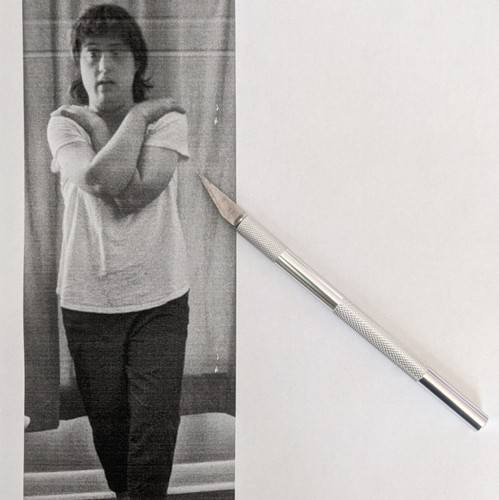
1. Cutting the photo
Initially, I used photos/drawings been printed out to create the shapes for a given painting. Due to her challenges with fine motor skills, Rita can’t cut the photos out herself. So I cut them with an X-acto knife.
2. Glue Cutout to Paper
She then glues them to her watercolor paper.
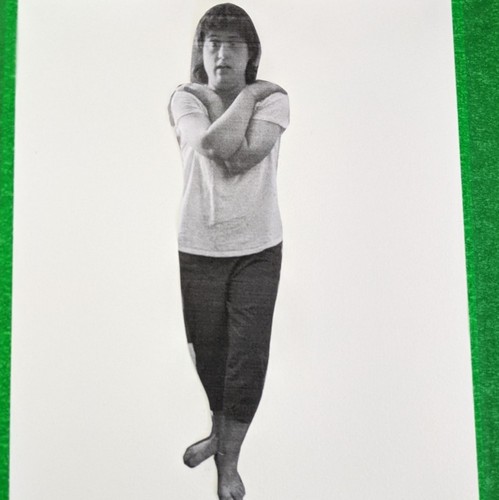

3. Apply Water
She moistens the background with water…
4. Paint
…and paints the background.
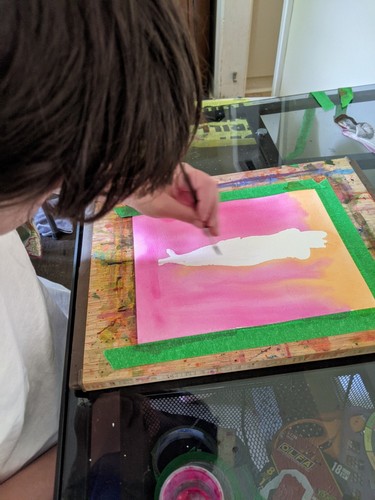
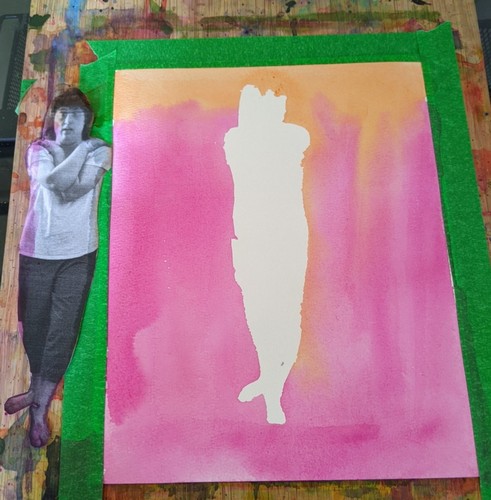
5. Remove the Template
She removes the paper template.
6. Apply Water to Masked Section
The background is allowed to dry (or can be quickly dried with a hair dryer). She then applies water to the previously masked section of the image.


7. Apply the Paint
The silhouette is painted as desired. Using this technique, it’s fine to let the watercolors dribble outside the lines of the masking. It becomes part of the style of the painting.
8. Add Shading
Shading can be added if appropriate to the painting.
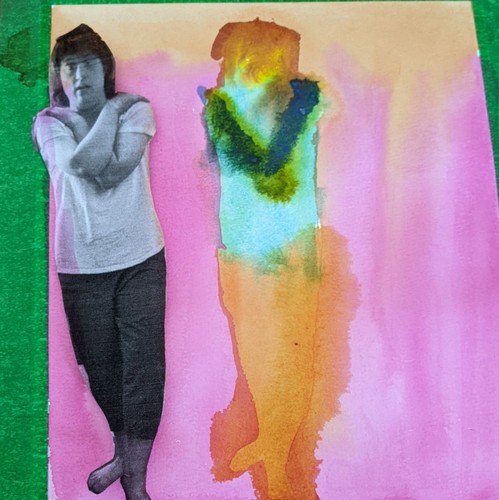
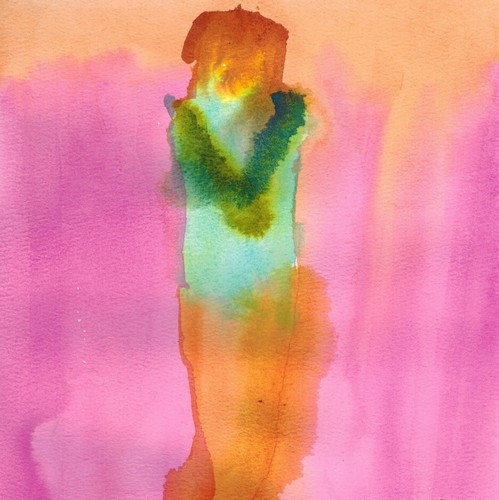
9. Add Details
Once the painting has dried, one can go back in with a fine liner pen to add details such as faces or outlines if you like.
Important Point
Use waterproof ink to make the template or ink will run all over your page when it gets wet. If your printer has water soluble ink, just recut the silhouette on a plain piece of paper to use in masking. This technique, using photos of Rita herself in yoga classes is the basis for the series of yoga poses that she has painted in this collection.
Creating Self-Drawn Templates
for Masking Paintings
Rationale
- Rita’s difficulty with fine motor skills, drawing, correcting and erasing are inevitable.
- Watercolor paper is expensive and somewhat delicate so that drawing and correcting with repeated erasing will damage the paper.
- But, by using very simplified drawings on plain printer paper, Rita can draw her own templates. If she makes errors, it’s fine to erase and correct on regular paper and use the result as a mask.
Example: Owl Template
Rita decided that she wanted to paint an owl series. I looked around online for ideas of how to draw an owl and this is what we came up with. Generally we both have a piece of paper and I demonstrate each step as she draws on her page. If she draws something that will not work out, we can erase with no worries.
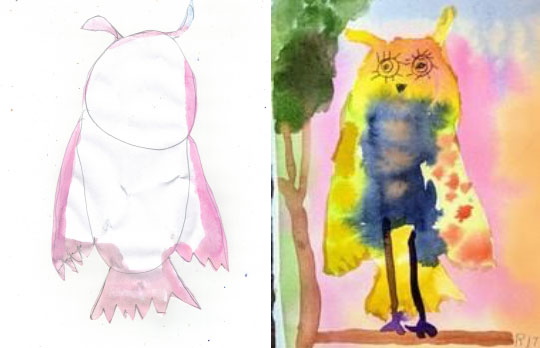
- Draw the letter U–generally using alphabet letters as the basis for drawings is useful as Rita knows how to write all the letters of the alphabet.
- Draw a circle at the top of the letter U–this is the owl’s head.
- Draw diagonal lines from the shoulder down for the outer wings.
- Draw a jagged line diagonally upwards–the bottom of the wings.
- Draw a diagonal line at the bottom on each side for the tail. Draw a jagged horizontal across the bottom forming the lower edge of the tail.
- Draw the owl’s horns at the top of the head.
- The owl’s legs and claws can be painted in once the actual painting is complete.
- The owl template can be used in the same manner described in the Using Existing Photos/Drawings For Masking Paintings section.
